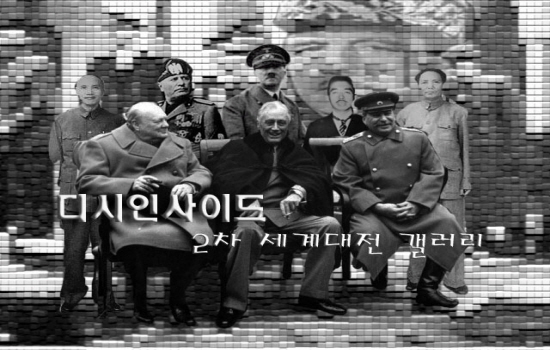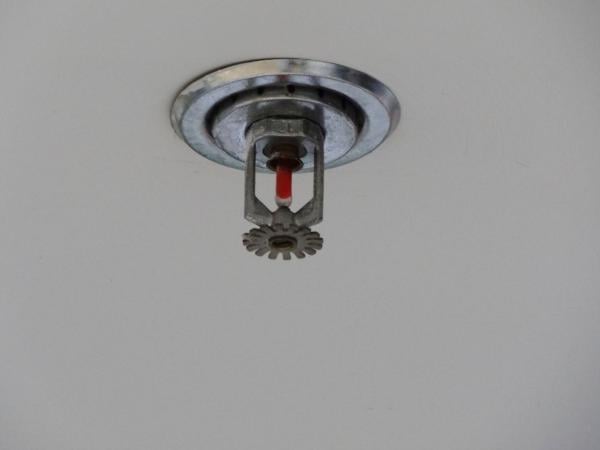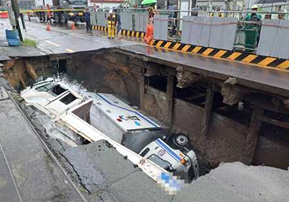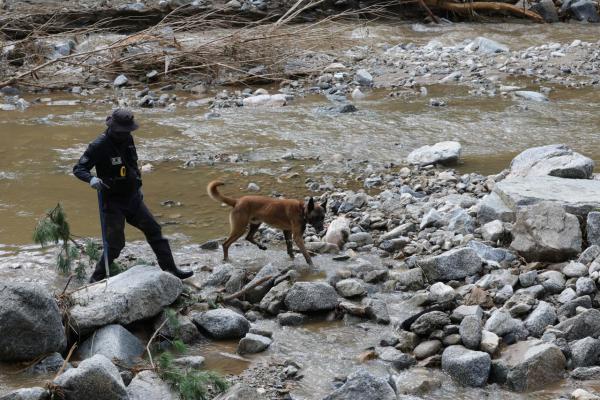Battle of Midway.
조금 깁니다만, 요크타운의 침몰에 관하여 자세히 나와있어서 이렇게 올려봅니다.
Battle of Midway
Thus armed with this intelligence, Admiral Nimitz began methodically planning Midway's
defense, rushing all possible reinforcement in the way of men, planes and guns to Midway.
In addition, he began gathering his naval forces-comparatively meager as they were-to meet
the enemy at sea. As part of those preparations, he recalled TF 16, Enterprise and Hornet
(CV-8), to Pearl Harbor for a quick replenishment.
Yorktown, too, received orders to return to Hawaii; and she arrived at Pearl Harbor on 27
May. Miraculously, yard workers there - laboring around the clock - made enough repairs to
enable the ship to put to sea. Her air group - for the most part experienced but weary -
was augmented by planes and flyers from Saratoga (CV-3) which was then headed for Hawaiian
waters after her modernization on the west coast. Ready for battle, Yorktown sailed as the
central ship of TF 17 on 30 May.
Northeast of Midway, Yorktown, flying Rear Admiral Fletcher's flag, rendezvoused with TF
16 under Rear Admiral Raymond A. Spruance and maintained a positio n 10 miles to the
northward of the latter. Over the days that ensued, as the ships proceeded toward a date
with destiny, few men realized that within the next few days the pivotal battle of the war
in the Pacific would be fought.
Patrols, both from Midway itself and from the carriers, proceeded apace during those days
in early June. On the morning of the 4th as dawn began to streak the eastern sky, Yorktown
launched a 10-plane group of Dauntlesses from VB-5 which searched a northern semicircle
for a distance of 100 miles out but found nothing.
Meanwhile, PBYs flying from Midway had sighted the approaching Japanese and broadcast what
turned out to be the alarm for the American forces defending the key atoll. Admiral
Fletcher, in tactical command, ordered Admiral Spruance, with TF 16, to locate the enemy
carrier force and strike them as soon as they were found.
Yorktown's search group returned at 0830, landing soon after the last of the six-plane CAP
had left the deck. When the last of the Dauntlesses had landed, a flight deck ballet took
place in which the deck was spotted for the launch of the ship's attack group-17
Dauntlesses from VB-3; 12 Devastators from VT-3, and six Wildcats from "Fighting Three."
Enterprise and Hornet, meanwhile, launched their attack groups.
The torpedo planes from the three American flattops located the Japanese carrier striking
force but met disaster. Of the 41 planes from VT-8, VT-6, and VT-3, only six returned to
Enterprise and Yorktown, collectively. None made it back to Hornet.
The destruction of the torpedo planes, however, had served a purpose. The Japanese CAP had
broken off their high-altitude cover for their carriers and had concentrated on the
Devastators, flying low "on the deck." The skies above were thus left open for Dauntlesses
arriving from Yorktown and Enterprise. Virtually unopposed, the SBDs dove to the attack.
Yorktown's dive-bombers pummeled Kaga, making three lethal hits with 1,000-pound bombs
that turned the ship into a flaming inferno. Enterprise's planes, meanwhile, hit Akagi and
Soryu - turning them, too into wrecks within a very short time. The bombs from the
Dauntlesses caught all of the Japanese carriers in the midst of refueling and rearming
operations, and the combination of bombs and gasoline proved explosive and disastrous to
the Japanese.
Three Japanese carriers had been lost. A fourth however, still roamed at large - Hiryu.
Separated from her sisters, that ship had launched a striking force of 18 "Vals" that soon
located Yorktown.
As soon as the attackers had been picked up on Yorktown's radar at about 1329, she
discontinued the fueling of her CAP fighters on deck and swiftly cleared for action. Her
returning dive bombers were moved from the landing circle to open the area for
antiaircraft fire. The Dauntlesses were ordered aloft to form a CAP. An auxiliary gasoline
tank - of 800 gallons capacity - was pushed over the carrier's fantail, eliminating one
fire hazard. The crew drained fuel lines and closed and secured all compartments.
All of Yorktown's fighters were vectored out to intercept the oncoming Japanese aircraft,
and did so some 15 to 20 miles out. The Wildcats attacked vigorously, breaking up what
appeared to be an organized attack by some 18 "Vals" and 18 "Zeroes." "Planes were flying
in every direction," wrote Capt. Buckmaster after the action, "and many were falling in
flames."
Despite an intensive barrage and evasive manuvering, three "Vals" scored hits. Two of them
were shot down soon after releasing their bomb loads; the third went out of control just
as his bomb left the rack. It tumbled in flight and hit just abaft number two elevator on
the starboard side, exploding on contact and blasting a hole about 10 feet square in the
flight deck. Splinters from the exploding bomb decimated the crews of the two 1.1-inch gun
mounts aft of the island and on the flight deck below. Fragments piercing the flight deck
hit three planes on the hangar deck, starting fires. One of the aircraft, a Yorktown
Dauntless, was fully fueled and carrying a 1,000-pound bomb. Prompt action by Lt. A. C.
Emerson, the hangar deck officer, prevented a serious conflagration by releasing the
sprinkler system and quickly extinguishing the fire.
The second bomb to hit the ship came from the port side, pierced the flight deck, and
exploded in the lower part of the funnel. It ruptured the uptakes for three boilers,
disabled two boilers themselves, and extinguished the fires in five boilers. Smoke and
gases began filling the firerooms of six boilers. The men at number one boiler, however,
remained at their post despite their danger and discomfort and kept its fire going,
maintaining enough steam pressure to allow the auxiliary steam systems to function.
A third bomb hit the carrier from the starboard side, pierced the side of number one
elevator and exploded on the fourth deck, starting a persistent fire in the rag storage
space, adjacent to the forward gasoline stowage and the magazines. The prior precaution of
smothering the gasoline system with CO undoubtedly prevented the gasoline from igniting.
While the ship recovered from the damage inflicted by the dive-bombing attack, her speed
dropped to six knots; and then at 1440, about 20 minutes after the bomb hit that had shut
down most of the boilers, Yorktown slowed to a stop, dead in the water.
At about 1540, Yorktown prepared to get underway again; and, at 1550, the engine room
force reported that they were ready to make 20 knots or better. The ship was not yet out
of the fight.
Simultaneously, with the fires controlled sufficiently to warrant the resumption of
fueling operations, Yorktown began fueling the gasoline tanks of the fighters then on
deck. Fueling had just commenced when the ship's radar picked up an incoming air group at
a distance of 33 miles away. While the ship prepared for battle - again smothering
gasoline systems and stopping the fueling of the planes on her flight deck - she vectored
four of the six fighters of the CAP in the air to intercept the incoming raiders. Of the
10 fighters on board, eight had as much as 23 gallons of fuel in their tanks. They
accordingly were launched as the remaining pair of fighters of the CAP headed out to
intercept the Japanese planes.
At 1600, Yorktown churned forward, making 20 knots. The fighters she had launched and
vectored out to intercept had meanwhile made contact, Yorktown received reports that the
planes were "Kates." The Wildcats downed at least three of the attacking torpedo planes,
but the rest began their approach in the teeth of a heavy antiaircraft barrage from the
carrier and her escorts.
Yorktown maneuvered radically, avoiding at least two torpedoes before two "fish" tore into
her port side within minutes of each other. The first hit at 1620. The carrier had been
mortally wounded; she lost power and went dead in the water with a jammed rudder and an
increasing list to port.
As the list progressed, Comdr. C. E. Aldrich, the damage control officer, reported from
central station that, without power, controlling the flooding looked impossible. The
engineering officer, Lt. Comdr. J. F. Delaney, soon reported that all fires were out; all
power was lost; and. worse yet, it was impossible to correct the list. Faced with that
situation, Capt. Buckmaster ordered Aldrich, Delaney, and their men to secure and lay up
on deck to put on life jackets.
The list, meanwhile, continued to increase. When it reached 26 degrees, Buckmaster and
Aldrich agreed that the ship's capsizing was only a matter of minutes. "In order to save
as many of the ship's company as possible," the captain wrote later, he "ordered the ship
to be abandoned."
Over the minutes that ensued, the crew left ship, lowering the wounded to life rafts and
striking out for the nearby destroyers and cruisers to be picked up by boats from those
ships. After the evacuation of all wounded, the executive officer, Comdr. I. D. Wiltsie,
left the ship down a line on the starboard side. Capt. Buckmaster, meanwhile, toured the
ship for one last time, inspecting her to see if any men remained. After finding no "live
personnel," Buckmaster lowered himself into the water by means of a line over the stern.
By that point, water was lapping the port side of the hangar deck.
Picked up by the destroyer Hammann (DD-412), Buckmaster was transferred to Astoria (CA-34)
soon thereafter and reported to Rear Admiral Fletcher, who had shifted his flag to the
heavy cruiser after the first dive-bombing attack. The two men agreed that a salvage party
should attempt to save the ship since she had stubbornly remained afloat despite the heavy
list and imminent danger of capsizing.
Interestingly enough, while the efforts to save Yorktown had been proceeding apace, her
planes were still in action, joining those from Enterprise in striking the last Japanese
carrier - Hiryu - late that afternoon. Taking four direct hits, the Japanese flattop was
soon helpless. She was abandoned by her crew and left to drift out of control and manned
only by her dead. Yorktown had been avenged.
Yorktown, as it turned out, floated through the night; two men were still alive on board
her-one attracted attention by firing a machine gun that was heard by the sole attending
destroyer, Hughes. The escort picked up the men, one of whom later died.
Meanwhile, Buckmaster had selected 29 officers and 141 men to return to the ship in an
attempt to save her. Five destroyers formed an antisubmarine screen while the salvage
party boarded the listing carrier, the fire in the rag storage still smoldering on the
morning of the 6th. Vireo (AT-144), summoned from Pearl and Hermes Reef, soon commenced
towing the ship. Progress, though, was painfully slow.
Yorktown's repair party went on board with a carefully predetermined plan of action to be
carried out by men from each department - damage control, gunnery air engineering,
navigation, communication, supply and medical. To assist in the work, Lt. Comdr. Arnold E.
True brought his ship, Hammann, alongside to starboard, aft, furnishing pumps and electric
power.
By mid-afternoon, it looked as if the gamble to save the ship was paying off. The process
of reducing topside weight was proceeding well - one 5-inch gun had been dropped over the
side, and a second was ready to be cast loose; planes had been pushed over the side; the
submersible pumps (powered by electricity provided by Hammann) had pumped out considerable
quantities of water from the engineering spaces. The efforts of the salvage crew had
reduced the list about two degrees.
Unbeknownst to Yorktown and the six nearby destroyers the Japanese submarine I-168 had
achieved a favorable firing positio n. Remarkably - but perhaps understandable in light of
the debris and wreckage in the water in the vicinity - none of the destroyers picked up
the approaching I-boat. Suddenly, at 15:36, lookouts spotted a salvo of four torpedoes
churning toward the ship from the starboard beam.
Hammann went to general quarters, a 20-millimeter gun going into action in an attempt to
explode the "fish" in the water. One torpedo hit Hammann - her screws churning the water
beneath her fantail as she tried to get underway - directly amidships and broke her back.
The destroyer jackknifed and went down rapidly.
Two torpedoes struck Yorktown just below the turn of the bilge at the after end of the
island structure. The fourth torpedo passed just astern of the carrier.
Approximately a minute after Hammann's stern disappeared beneath the waves, an explosion
rumbled up from the depths - possibly caused by the destroyer's depth charges going off.
The blast killed many of Hammann's and a few of Yorktown's men who had been thrown into
the water. The concussion battered the already-damaged carrier's hull and caused
tremendous shocks that carried away Yorktown's auxiliary generator, sent numerous fixtures
from the hangar deck overhead crashing to the deck below; sheared rivets in the starboard
leg of the foremast; and threw men in every direction, causing broken bones and several
minor injuries.
Prospects for immediate resumption of salvage work looked grim, since all destroyers
immediately commenced searches for the enemy submarine (which escaped) and commenced
rescuing men from Hammann and Yorktown. Capt. Buckmaster decided to postpone further
attempts at salvage until the following day.
Vireo cut the towline and doubled back to Yorktown to pick up survivors, taking on board
many men of the salvage crew while picking up men from the water. The little ship endured
a terrific pounding from the larger ship but nevertheless stayed alongside to carry out
her rescue mission. Later, while on board the tug, Capt. Buckmaster conducted a burial
service, two officers and an enlisted man from Hammann were committed to the deep.
The second attempt at salvage, however, would never be made. Throughout the night of the
6th and into the morning of the 7th, Yorktown remained stubbornly afloat. By 0530 on the
7th, however, the men in the ships nearby noted that the carrier's list was rapidly
increasing to port. As if tired, the valiant flattop turned over at 0701 on her port side
and sank in 3,000 fathoms (5500 m) of water, her battle flags flying.
Yorktown (CV-5) earned three battle stars for her World War II service; two of them being
for the significant part she had played in stopping Japanese expansion and turning the
tide of the war at Coral Sea and at Midway.
On 19 May 1998, her remains on the ocean floor were located and photographed.









댓글 영역
획득법
① NFT 발행
작성한 게시물을 NFT로 발행하면 일주일 동안 사용할 수 있습니다. (최초 1회)
② NFT 구매
다른 이용자의 NFT를 구매하면 한 달 동안 사용할 수 있습니다. (구매 시마다 갱신)
사용법
디시콘에서지갑연결시 바로 사용 가능합니다.